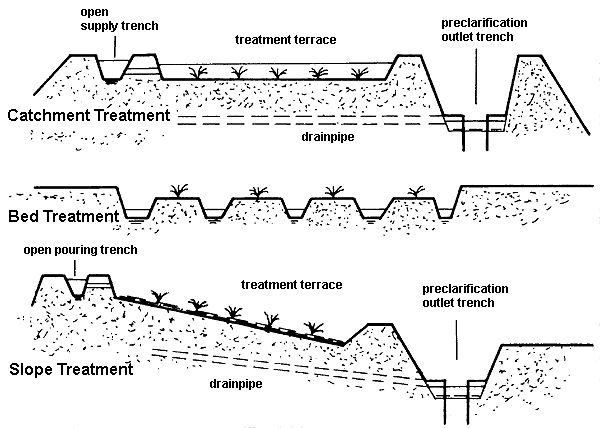Soil Pollution
“
— ”
Berlin sewage farms are a historical example of soil pollution. As of writing, all sewage farms around Berlin are no longer in use. They were initially designed at the end of the nineteenth century as a solution to treat Berlin’s wastewater. Sewage farms consisted of large swaths of land where wastewater from Berlin was disposed for treatement. First, wastewater was collected in concrete or earthen sedimentation basins, then the sediments were dewatered at special sludge drying areas. Dewatered sludge was then used as soil conditioner for agricultural activities.
Sewage farms yielded higher numbers in crop production as compared with traditionally fertilized fields, but with the growth of Berlin, and the accompanying increased use of household chemicals and detergents, as well as increasing amounts of industrial water waste, the fields began to show significant signs of soil pollution. Polluted with heavy metals, the soil was no longer usable for farming. After sewage farm operations were stopped, areas no longer used were leveled, filled, and plowed under. This resulted in a mixing of soils causing pollutants to go into deeper soil layers.1
Nowadays sewage farms still represent a considerable contaminated site problem. Large areas of former sewage farms are now built-up within Berlin, in Marzahn, Hellersdorf, and Hohenschönhausen. However, other sites, such as the former sewage farm on the present day Buch forest, have gone through soil remediation processes and subsequently reforested. To achieve soil remediation, boulder clay![]() is used in order to bind heavy metals and prevent them from shifting into the soil; the resulting marl
is used in order to bind heavy metals and prevent them from shifting into the soil; the resulting marl![]() serves as fertilizer for newly planted trees.2
serves as fertilizer for newly planted trees.2



Image source: Sewage Farms 1992. Accessed march 20th 2022 https://www.berlin.de/umweltatlas/en/soil/sewage-farms/1992/introduction/
References
1. Sewage Farms 1992. Accessed february 19th 2022 https://www.berlin.de/umweltatlas/en/soil/sewage-farms/1992/introduction/
2. Berliner Riesefelder. December 10th 2020. https://de.wikipedia.org/wiki/Berliner_Rieselfelder (this is the same source for the image)
1. Sewage Farms 1992. Accessed february 19th 2022 https://www.berlin.de/umweltatlas/en/soil/sewage-farms/1992/introduction/
2. Berliner Riesefelder. December 10th 2020. https://de.wikipedia.org/wiki/Berliner_Rieselfelder (this is the same source for the image)